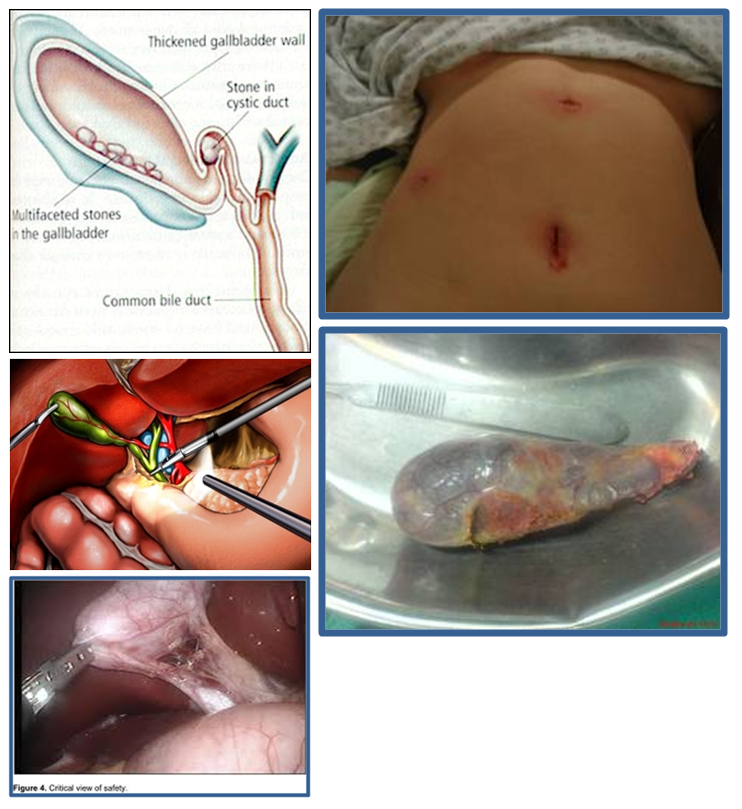
Gallbladder is a pear-shaped organ that stores bile, the fluid that helps digest food. If it’s not working the way it should, hard fragments start to form. These can be as small as a grain of rice or as big as a golf ball. These are called gall stones.
Gallstones don’t go away on their own. If they start to hurt or cause other symptoms, your doctor may decide to remove your gallbladder. This type of surgery is called a cholecystectomy. It’s one of the most common surgeries doctors perform.
About 80% of people who have gallstones will need surgery.
Doctors can remove your gallbladder in one of two ways:
Laparoscopic cholecystectomy: Doctors also call this “keyhole surgery.” Your surgeon doesn’t make a big opening in your belly. Instead, he makes four small cuts. He inserts a very thin, flexible tube that contains a light and a tiny video camera into your belly. These help your surgeon see your gallbladder better. Next, he’ll insert special tools to remove the diseased organ.
Open surgery: During this procedure, your surgeon will make a 5- to 7-inch incision (cut) on your belly to take out your gallbladder. You’ll need open surgery if you have a bleeding disorder. You may also need it if you have severe gallbladder disease, are very overweight, or are in your last trimester of pregnancy.
For both types of surgery, you’ll be given general anesthesia. This means you’ll sleep through the procedure and won’t feel any pain while it’s being done.
If left untreated, gallstones can also lead to more serious problems, like:
Before your doctor opts for surgery, he’ll run several tests to see the effect your gallstones are having on your health. Tests might include:
You may be able to manage your symptoms for a short time by making changes to your diet. This includes cutting back on fatty foods. But dietary changes don’t always help prevent gallbladder attacks.
And even if your gallstones symptoms do go away, there’s a chance they’ll return.
You can live without your gallbladder. Your liver can make enough bile on its own. This will naturally find its way into your small intestine even if your gallbladder is removed.
Doctors believe gallbladder surgery is safe, but some problems can still arise. These may include:
However these are extremely rare and can be managed accordingly if they shall occur.
Moreover proper pre operative assessment and care is taken to avoid such mishaps.
Laparoscopic gallbladder surgery is the most common surgery done to remove the gallbladder. In this type of surgery, a doctor inserts a lighted viewing instrument called a laparoscope and surgical tools into your abdomen through 3 or 4 small cuts (punctures). This type of surgery is very safe, and people who have it usually recover enough in about one week to go back to work or to their normal routines.
Open gallbladder surgery involves one larger incision through which the gallbladder is removed. It may be done if laparoscopic surgery is not an option or when complications are found during laparoscopic surgery.
The length of time it takes you to heal depends on the type of surgery you have.
If you have your gallbladder removed during open surgery, you’ll need to stay in the hospital for 2 days afterward. It may take between 2 to 3 weeks for your body to heal fully.
Laparoscopy is less involved, so you’ll have less pain and heal faster than if you have open surgery. Most people who have it are able to go home from the hospital the next day. You’ll likely be back to your normal routine within 4-5 days.
